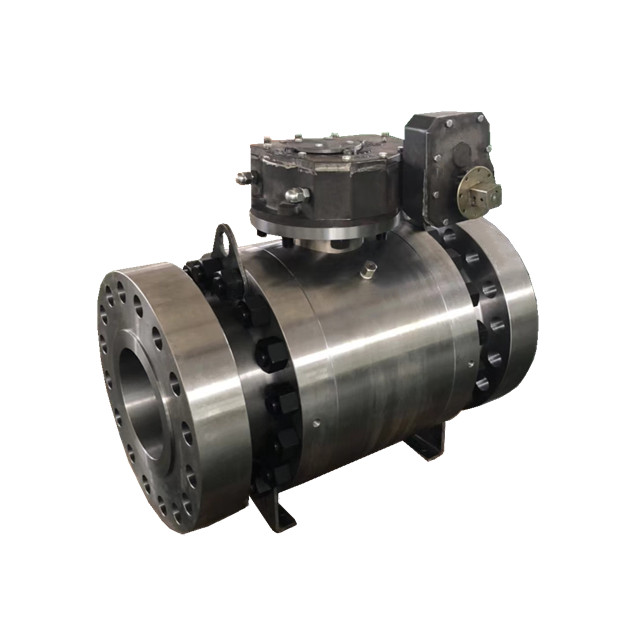A segment ball valve is an oblique, V-shaped, and oftentimes double-acting device that contains internal components. The segment ball valve is constructed of rigid, hard, and thermoplastic-lined metallic materials. The segment exposes a flow path through a V-notch.
A segment ball valve is generally composed of a metal or PTFE seat. The choice of seat material depends on the medium to be pumped through the valve.
Segment ball valves can side entry or top entry. These valves use design technology and are popular in many industries. Their design makes them easy to clean, easy to install, and highly resistant to slurries. Choosing the right segment ball valve for your specific needs is essential, but you can also opt for manual actuators if you need the convenience of manual operation.
If you want to know more about a segment ball valve, continue reading this article.
Table of Contents
ToggleWhat is Segment Ball Valve?
It is a type of single-seated trunnion-mounted ball valve. This type of valve has the highest degree of adjustment performance among all types of ball valves. A segment ball valve has an adjustable ratio of 100:1. Its flow characteristics are equal, and the valve has a shearing effect between the V-shaped cut in the seat and the metal valve seat. It is ideal for fluids containing fibers or slurries.
Many industries have used segment ball valves, including paper and pulp industries, petroleum refineries, petrochemical services, and more. These valves are known for their high reliability and durability, and they can be used to control the flow of various materials.
These valves are also used for a variety of other purposes. They are often used for high-pressure applications, and they are also lightweight and easy to install. For the best performance, segment ball valves have small, lightweight actuators that are usually powered by electricity or pneumatic air.
How Does It Work?
Segment ball valves are commonly used in water, food products, pharmaceuticals, and gas. A segment ball valve can use various types of actuators depending on its application. Some are manually powered, which can be a handy option if you do not have an electric source nearby. Manual actuators have a handle that the operator turns to move the ball.
It consists of a V-shaped portion that houses its internal components. These components are made from rigid and hard materials. They are also made with thermoplastic-lined metallic materials. They also have seats, which provide sealing between the segmented ball and the body, and are useful in industries where harsh conditions can damage other types of valves.
It is a quarter-turn valve that works like an eccentric plug valve. The driving shaft connects to one side of the ball, and the follower shaft connects to the other side. When the shaft rotates, the ball rotates and starts the flow along the v-notch. As the handle is moved in the opposite direction, the ball rotates again to stop the flow.










